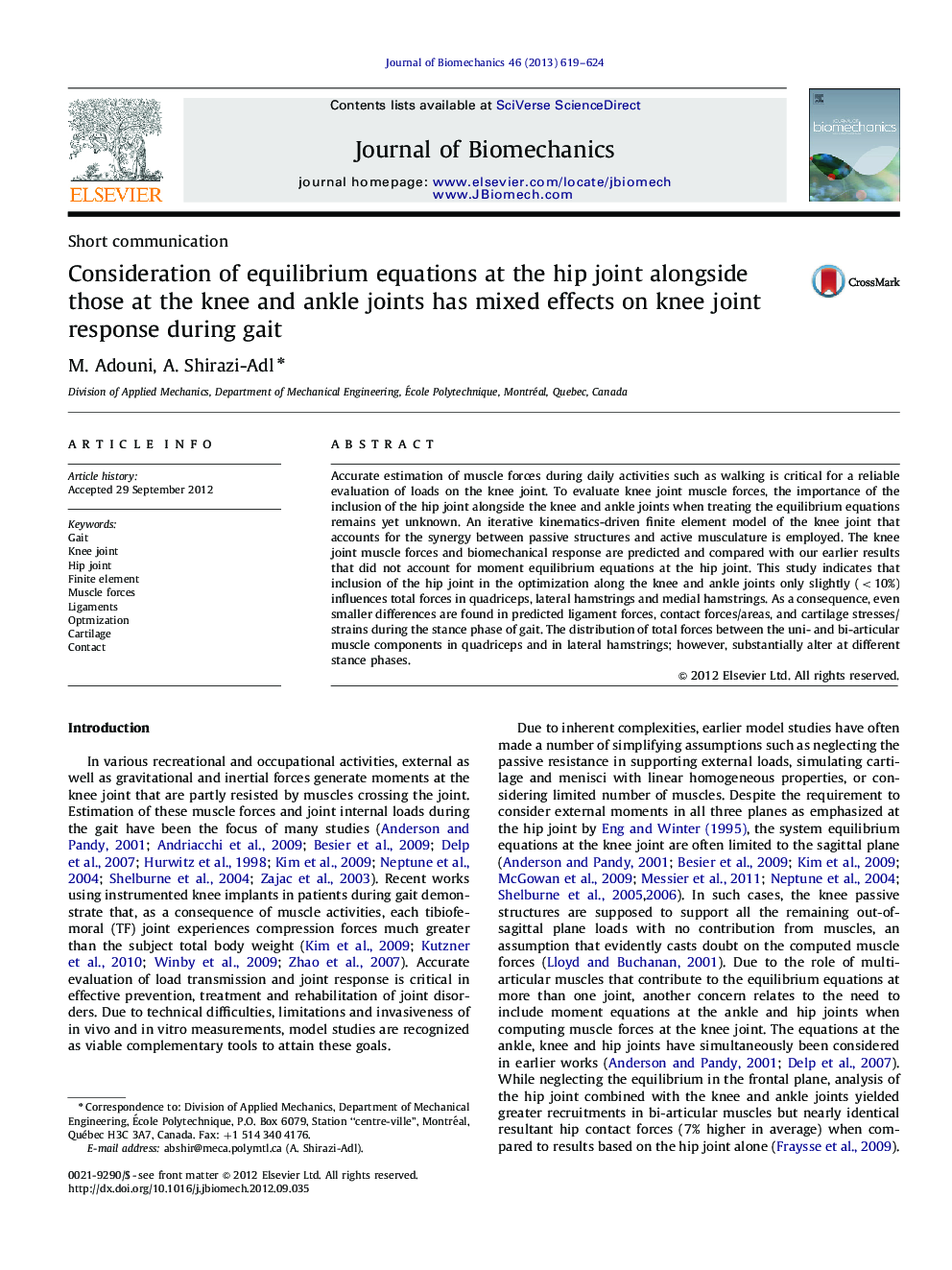| Article ID | Journal | Published Year | Pages | File Type |
|---|---|---|---|---|
| 10431992 | Journal of Biomechanics | 2013 | 6 Pages |
Abstract
Accurate estimation of muscle forces during daily activities such as walking is critical for a reliable evaluation of loads on the knee joint. To evaluate knee joint muscle forces, the importance of the inclusion of the hip joint alongside the knee and ankle joints when treating the equilibrium equations remains yet unknown. An iterative kinematics-driven finite element model of the knee joint that accounts for the synergy between passive structures and active musculature is employed. The knee joint muscle forces and biomechanical response are predicted and compared with our earlier results that did not account for moment equilibrium equations at the hip joint. This study indicates that inclusion of the hip joint in the optimization along the knee and ankle joints only slightly (<10%) influences total forces in quadriceps, lateral hamstrings and medial hamstrings. As a consequence, even smaller differences are found in predicted ligament forces, contact forces/areas, and cartilage stresses/strains during the stance phase of gait. The distribution of total forces between the uni- and bi-articular muscle components in quadriceps and in lateral hamstrings; however, substantially alter at different stance phases.
Related Topics
Physical Sciences and Engineering
Engineering
Biomedical Engineering
Authors
M. Adouni, A. Shirazi-Adl,
